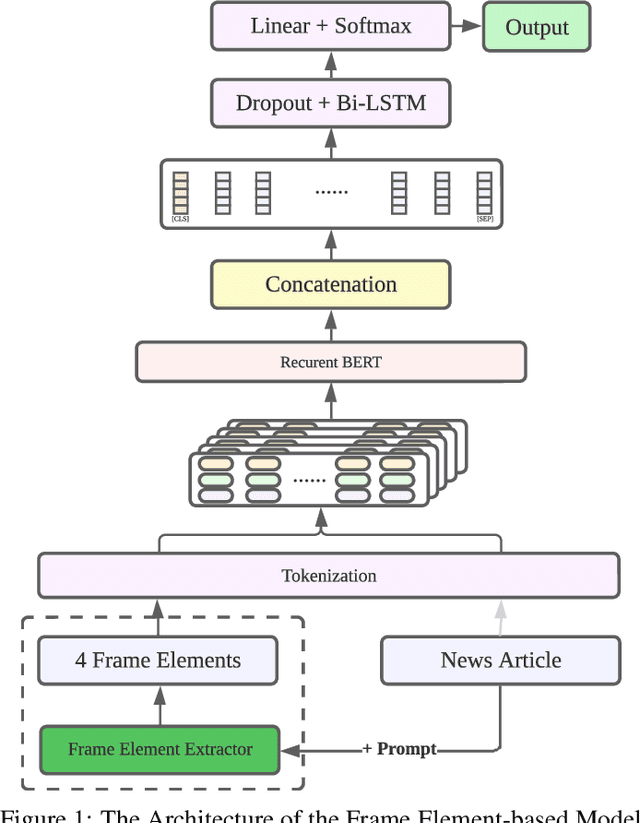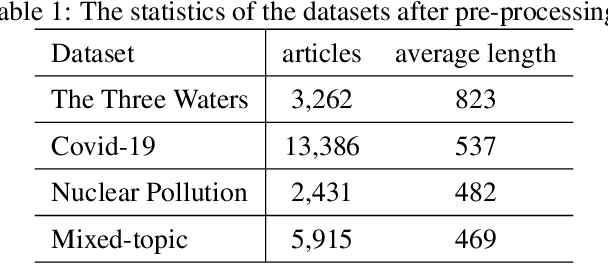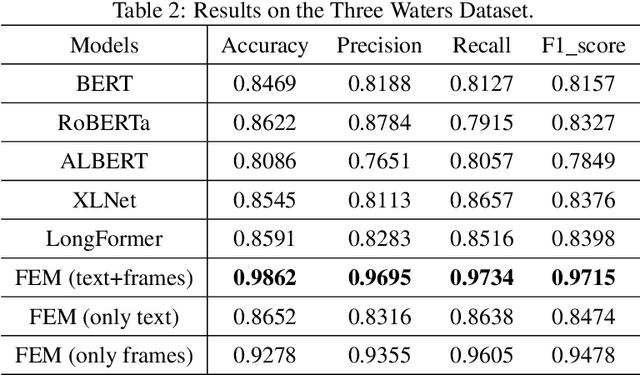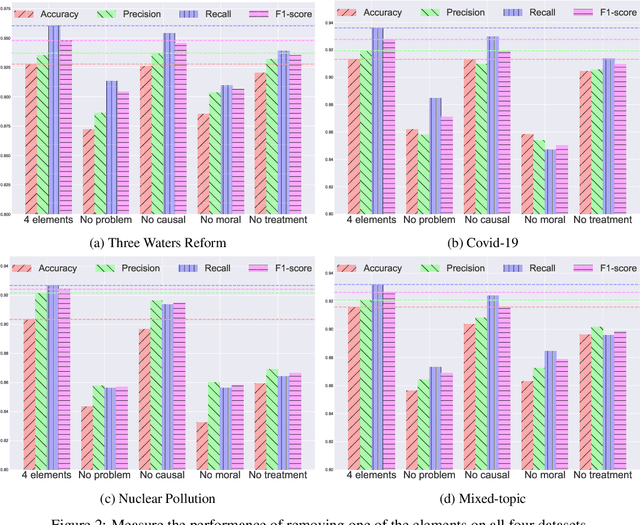Weihua Li
Towards Superior Quantization Accuracy: A Layer-sensitive Approach
Mar 09, 2025Abstract:Large Vision and Language Models have exhibited remarkable human-like intelligence in tasks such as natural language comprehension, problem-solving, logical reasoning, and knowledge retrieval. However, training and serving these models require substantial computational resources, posing a significant barrier to their widespread application and further research. To mitigate this challenge, various model compression techniques have been developed to reduce computational requirements. Nevertheless, existing methods often employ uniform quantization configurations, failing to account for the varying difficulties across different layers in quantizing large neural network models. This paper tackles this issue by leveraging layer-sensitivity features, such as activation sensitivity and weight distribution Kurtosis, to identify layers that are challenging to quantize accurately and allocate additional memory budget. The proposed methods, named SensiBoost and KurtBoost, respectively, demonstrate notable improvement in quantization accuracy, achieving up to 9% lower perplexity with only a 2% increase in memory budget on LLama models compared to the baseline.
FaultGPT: Industrial Fault Diagnosis Question Answering System by Vision Language Models
Feb 21, 2025Abstract:Recently, employing single-modality large language models based on mechanical vibration signals as Tuning Predictors has introduced new perspectives in intelligent fault diagnosis. However, the potential of these methods to leverage multimodal data remains underexploited, particularly in complex mechanical systems where relying on a single data source often fails to capture comprehensive fault information. In this paper, we present FaultGPT, a novel model that generates fault diagnosis reports directly from raw vibration signals. By leveraging large vision-language models (LVLM) and text-based supervision, FaultGPT performs end-to-end fault diagnosis question answering (FDQA), distinguishing itself from traditional classification or regression approaches. Specifically, we construct a large-scale FDQA instruction dataset for instruction tuning of LVLM. This dataset includes vibration time-frequency image-text label pairs and human instruction-ground truth pairs. To enhance the capability in generating high-quality fault diagnosis reports, we design a multi-scale cross-modal image decoder to extract fine-grained fault semantics and conducted instruction tuning without introducing additional training parameters into the LVLM. Extensive experiments, including fault diagnosis report generation, few-shot and zero-shot evaluation across multiple datasets, validate the superior performance and adaptability of FaultGPT in diverse industrial scenarios.
PerceiverS: A Multi-Scale Perceiver with Effective Segmentation for Long-Term Expressive Symbolic Music Generation
Nov 13, 2024Abstract:Music generation has progressed significantly, especially in the domain of audio generation. However, generating symbolic music that is both long-structured and expressive remains a significant challenge. In this paper, we propose PerceiverS (Segmentation and Scale), a novel architecture designed to address this issue by leveraging both Effective Segmentation and Multi-Scale attention mechanisms. Our approach enhances symbolic music generation by simultaneously learning long-term structural dependencies and short-term expressive details. By combining cross-attention and self-attention in a Multi-Scale setting, PerceiverS captures long-range musical structure while preserving performance nuances. The proposed model, evaluated on datasets like Maestro, demonstrates improvements in generating coherent and diverse music with both structural consistency and expressive variation. The project demos and the generated music samples can be accessed through the link: https://perceivers.github.io.
Towards General Industrial Intelligence: A Survey on IIoT-Enhanced Continual Large Models
Sep 02, 2024



Abstract:Currently, most applications in the Industrial Internet of Things (IIoT) still rely on CNN-based neural networks. Although Transformer-based large models (LMs), including language, vision, and multimodal models, have demonstrated impressive capabilities in AI-generated content (AIGC), their application in industrial domains, such as detection, planning, and control, remains relatively limited. Deploying pre-trained LMs in industrial environments often encounters the challenge of stability and plasticity due to the complexity of tasks, the diversity of data, and the dynamic nature of user demands. To address these challenges, the pre-training and fine-tuning strategy, coupled with continual learning, has proven to be an effective solution, enabling models to adapt to dynamic demands while continuously optimizing their inference and decision-making capabilities. This paper surveys the integration of LMs into IIoT-enhanced General Industrial Intelligence (GII), focusing on two key areas: LMs for GII and LMs on GII. The former focuses on leveraging LMs to provide optimized solutions for industrial application challenges, while the latter investigates continuous optimization of LMs learning and inference capabilities in collaborative scenarios involving industrial devices, edge computing, and cloud computing. This paper provides insights into the future development of GII, aiming to establish a comprehensive theoretical framework and research direction for GII, thereby advancing GII towards a more general and adaptive future.
Time-aware Heterogeneous Graph Transformer with Adaptive Attention Merging for Health Event Prediction
Apr 23, 2024Abstract:The widespread application of Electronic Health Records (EHR) data in the medical field has led to early successes in disease risk prediction using deep learning methods. These methods typically require extensive data for training due to their large parameter sets. However, existing works do not exploit the full potential of EHR data. A significant challenge arises from the infrequent occurrence of many medical codes within EHR data, limiting their clinical applicability. Current research often lacks in critical areas: 1) incorporating disease domain knowledge; 2) heterogeneously learning disease representations with rich meanings; 3) capturing the temporal dynamics of disease progression. To overcome these limitations, we introduce a novel heterogeneous graph learning model designed to assimilate disease domain knowledge and elucidate the intricate relationships between drugs and diseases. This model innovatively incorporates temporal data into visit-level embeddings and leverages a time-aware transformer alongside an adaptive attention mechanism to produce patient representations. When evaluated on two healthcare datasets, our approach demonstrated notable enhancements in both prediction accuracy and interpretability over existing methodologies, signifying a substantial advancement towards personalized and proactive healthcare management.
An Enhanced Grey Wolf Optimizer with Elite Inheritance and Balance Search Mechanisms
Apr 09, 2024Abstract:The Grey Wolf Optimizer (GWO) is recognized as a novel meta-heuristic algorithm inspired by the social leadership hierarchy and hunting mechanism of grey wolves. It is well-known for its simple parameter setting, fast convergence speed, and strong optimization capability. In the original GWO, there are two significant design flaws in its fundamental optimization mechanisms. Problem (1): the algorithm fails to inherit from elite positions from the last iteration when generating the next positions of the wolf population, potentially leading to suboptimal solutions. Problem (2): the positions of the population are updated based on the central position of the three leading wolves (alpha, beta, delta), without a balanced mechanism between local and global search. To tackle these problems, an enhanced Grey Wolf Optimizer with Elite Inheritance Mechanism and Balance Search Mechanism, named as EBGWO, is proposed to improve the effectiveness of the position updating and the quality of the convergence solutions. The IEEE CEC 2014 benchmark functions suite and a series of simulation tests are employed to evaluate the performance of the proposed algorithm. The simulation tests involve a comparative study between EBGWO, three GWO variants, GWO and two well-known meta-heuristic algorithms. The experimental results demonstrate that the proposed EBGWO algorithm outperforms other meta-heuristic algorithms in both accuracy and convergence speed. Three engineering optimization problems are adopted to prove its capability in processing real-world problems. The results indicate that the proposed EBGWO outperforms several popular algorithms.
Balancing Information Perception with Yin-Yang: Agent-Based Information Neutrality Model for Recommendation Systems
Apr 07, 2024Abstract:While preference-based recommendation algorithms effectively enhance user engagement by recommending personalized content, they often result in the creation of ``filter bubbles''. These bubbles restrict the range of information users interact with, inadvertently reinforcing their existing viewpoints. Previous research has focused on modifying these underlying algorithms to tackle this issue. Yet, approaches that maintain the integrity of the original algorithms remain largely unexplored. This paper introduces an Agent-based Information Neutrality model grounded in the Yin-Yang theory, namely, AbIN. This innovative approach targets the imbalance in information perception within existing recommendation systems. It is designed to integrate with these preference-based systems, ensuring the delivery of recommendations with neutral information. Our empirical evaluation of this model proved its efficacy, showcasing its capacity to expand information diversity while respecting user preferences. Consequently, AbIN emerges as an instrumental tool in mitigating the negative impact of filter bubbles on information consumption.
Detecting misinformation through Framing Theory: the Frame Element-based Model
Feb 19, 2024



Abstract:In this paper, we delve into the rapidly evolving challenge of misinformation detection, with a specific focus on the nuanced manipulation of narrative frames - an under-explored area within the AI community. The potential for Generative AI models to generate misleading narratives underscores the urgency of this problem. Drawing from communication and framing theories, we posit that the presentation or 'framing' of accurate information can dramatically alter its interpretation, potentially leading to misinformation. We highlight this issue through real-world examples, demonstrating how shifts in narrative frames can transmute fact-based information into misinformation. To tackle this challenge, we propose an innovative approach leveraging the power of pre-trained Large Language Models and deep neural networks to detect misinformation originating from accurate facts portrayed under different frames. These advanced AI techniques offer unprecedented capabilities in identifying complex patterns within unstructured data critical for examining the subtleties of narrative frames. The objective of this paper is to bridge a significant research gap in the AI domain, providing valuable insights and methodologies for tackling framing-induced misinformation, thus contributing to the advancement of responsible and trustworthy AI technologies. Several experiments are intensively conducted and experimental results explicitly demonstrate the various impact of elements of framing theory proving the rationale of applying framing theory to increase the performance in misinformation detection.
Ultra Dual-Path Compression For Joint Echo Cancellation And Noise Suppression
Aug 21, 2023Abstract:Echo cancellation and noise reduction are essential for full-duplex communication, yet most existing neural networks have high computational costs and are inflexible in tuning model complexity. In this paper, we introduce time-frequency dual-path compression to achieve a wide range of compression ratios on computational cost. Specifically, for frequency compression, trainable filters are used to replace manually designed filters for dimension reduction. For time compression, only using frame skipped prediction causes large performance degradation, which can be alleviated by a post-processing network with full sequence modeling. We have found that under fixed compression ratios, dual-path compression combining both the time and frequency methods will give further performance improvement, covering compression ratios from 4x to 32x with little model size change. Moreover, the proposed models show competitive performance compared with fast FullSubNet and DeepFilterNet. A demo page can be found at hangtingchen.github.io/ultra_dual_path_compression.github.io/.
BHEISR: Nudging from Bias to Balance -- Promoting Belief Harmony by Eliminating Ideological Segregation in Knowledge-based Recommendations
Jul 06, 2023



Abstract:In the realm of personalized recommendation systems, the increasing concern is the amplification of belief imbalance and user biases, a phenomenon primarily attributed to the filter bubble. Addressing this critical issue, we introduce an innovative intermediate agency (BHEISR) between users and existing recommendation systems to attenuate the negative repercussions of the filter bubble effect in extant recommendation systems. The main objective is to strike a belief balance for users while minimizing the detrimental influence caused by filter bubbles. The BHEISR model amalgamates principles from nudge theory while upholding democratic and transparent principles. It harnesses user-specific category information to stimulate curiosity, even in areas users might initially deem uninteresting. By progressively stimulating interest in novel categories, the model encourages users to broaden their belief horizons and explore the information they typically overlook. Our model is time-sensitive and operates on a user feedback loop. It utilizes the existing recommendation algorithm of the model and incorporates user feedback from the prior time frame. This approach endeavors to transcend the constraints of the filter bubble, enrich recommendation diversity, and strike a belief balance among users while also catering to user preferences and system-specific business requirements. To validate the effectiveness and reliability of the BHEISR model, we conducted a series of comprehensive experiments with real-world datasets. These experiments compared the performance of the BHEISR model against several baseline models using nearly 200 filter bubble-impacted users as test subjects. Our experimental results conclusively illustrate the superior performance of the BHEISR model in mitigating filter bubbles and balancing user perspectives.
 Add to Chrome
Add to Chrome Add to Firefox
Add to Firefox Add to Edge
Add to Edge